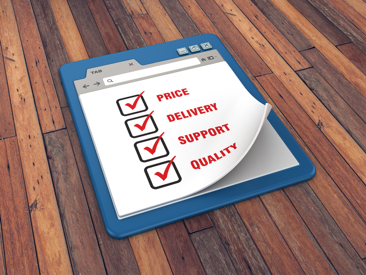Only…it doesn’t. You wonder - “Where did it go wrong? We have a marketable product AND great distributors. Sales should be skyrocketing!”
It’s almost too painful to look at the figures, the line graphs trudging uphill so slowly that, at times, you can barely discern any progress. Cue the wails and gnashing of the sales team’s teeth, echoing through the hallways amid the lamentations of “Where did it go wrong? We have a marketable product AND a great distributor. Sales should be skyrocketing!”
Unfortunately, this situation is all too familiar for many companies that haven’t fully embraced the connection between sales growth and distributor relationship. A distributor should always be viewed as a sales partner rather than the linchpin of the comprehensive sales strategy.
These are a few key strategies to keep in mind to maximize your distributor relationship, and the payoff is all bottom-line.
My Distributor, My Partner
Partnership is a mutually beneficial agreement, as long as both sides are contributing to the cause, but if a breakdown occurs on either side, the scope of the partnership fails. The first thing to assess is whether your product/service comprises a major portion of the distributor’s revenue or not. If it does, your product/service will get attention and prime focus, but if representing only a minor portion of revenue, expect emphasis to be placed elsewhere. Also, it’s important to note whether the distributor adds value to the sales process and revenue to the distributor, such as offering technical knowledge, installation services, etc. Otherwise, sales will be ripe to be taken over by direct orders via the internet. Distributors should have access to a full arsenal of tools and resources needed to promote your offerings. A good rule of thumb is to consider how your product/service complements the distributor’s scope of services. If you can make them excited about your product/service, demonstrate how you complement their present offering and show how they can make money, they will approach your offering with vigor.An Ounce of Prevention Really Is Worth a Pound of Cure
One of the most common reasons given by distributors for lackluster sales is the market-readiness of the product/service. There are many moving parts in the process, from manufacturing to market. One issue could derail an entire sales strategy. Lack of marketing components, supply chain woes resulting in extended lead times, irregular price points, poor customer service, and quality deficits are frequently noted as problematic. Additionally, lack of lead generation or territory assignment provides no avenues for growth. Distributors also may need digital support, such as drawings and informational resources on the manufacturer’s website.
Rome Wasn’t Built in a Day—And Neither Will Your Sales Strategy Be
Here’s a bitter pill to swallow: sales take time. They are a years-long effort, a gradual increase that builds upon itself as a true reflection of brand recognition. Let’s repeat those two words: Brand Recognition. While there’s no perfect, foolproof way to astronomical sales figures, the best long-term answer for the manufacturer is to have end-users requesting your system by brand name or function. This sort of recognition takes time to build (probably years), as well as a financial investment. Find a customer pain point that your product/service heals and consider using technology to ease the pain. Never take your eyes off the end-user. If you can expertly fulfill their needs, your brand will become synonymous with the quality and value you supply.If all of these criteria are being met and your sales still fail to impress, maybe it’s time to reassess your choice of distributor. While this could be the fastest way to give your sales figures some “oomph,” it still could take a year or more, depending on product/service complexity.
With these strategies and a little patience, you’ll be ready to maximize your distributor relationship and watch your sales skyrocket. Please contact us if you need additional help, and we’ll be happy to assist you!




